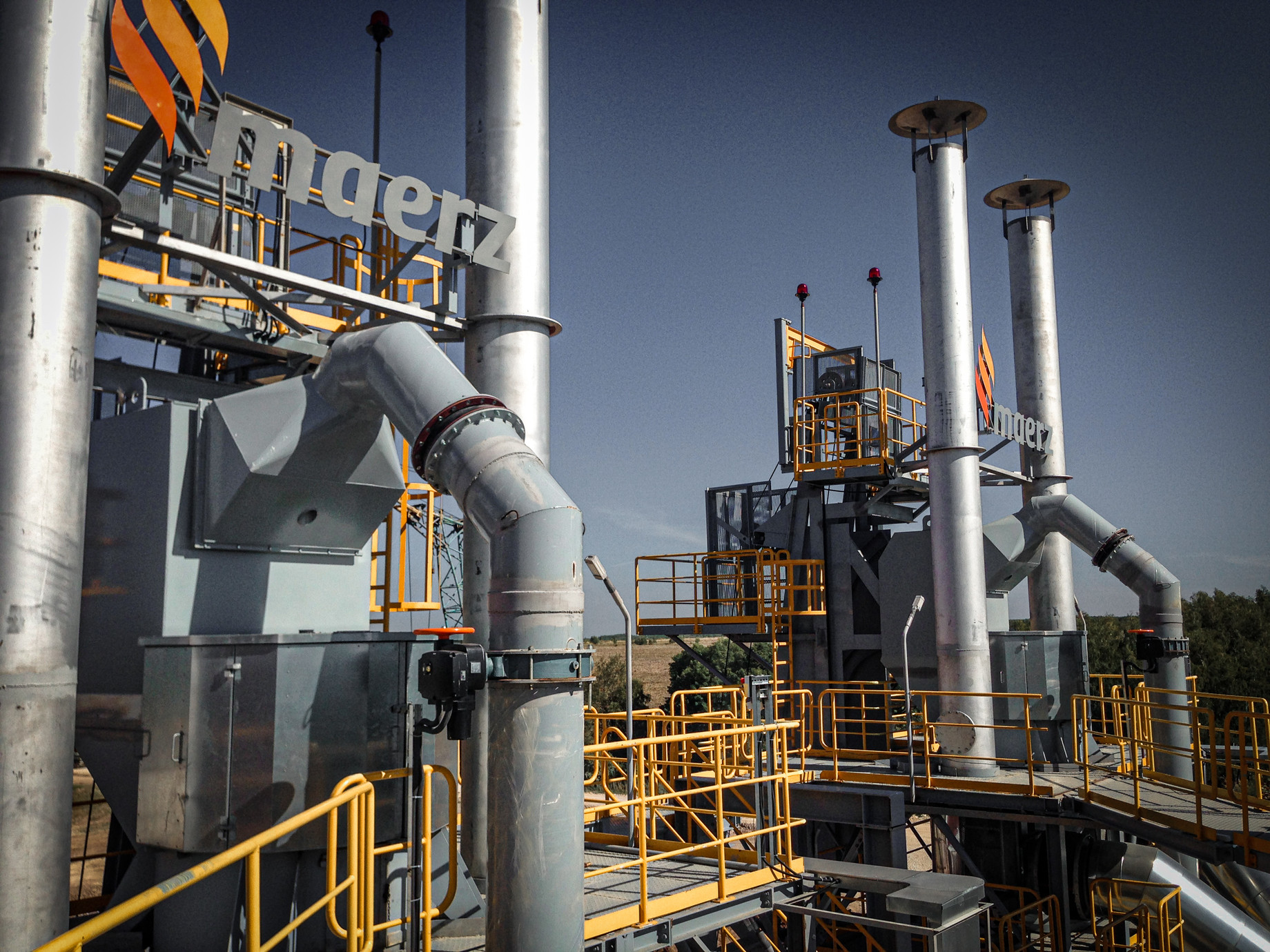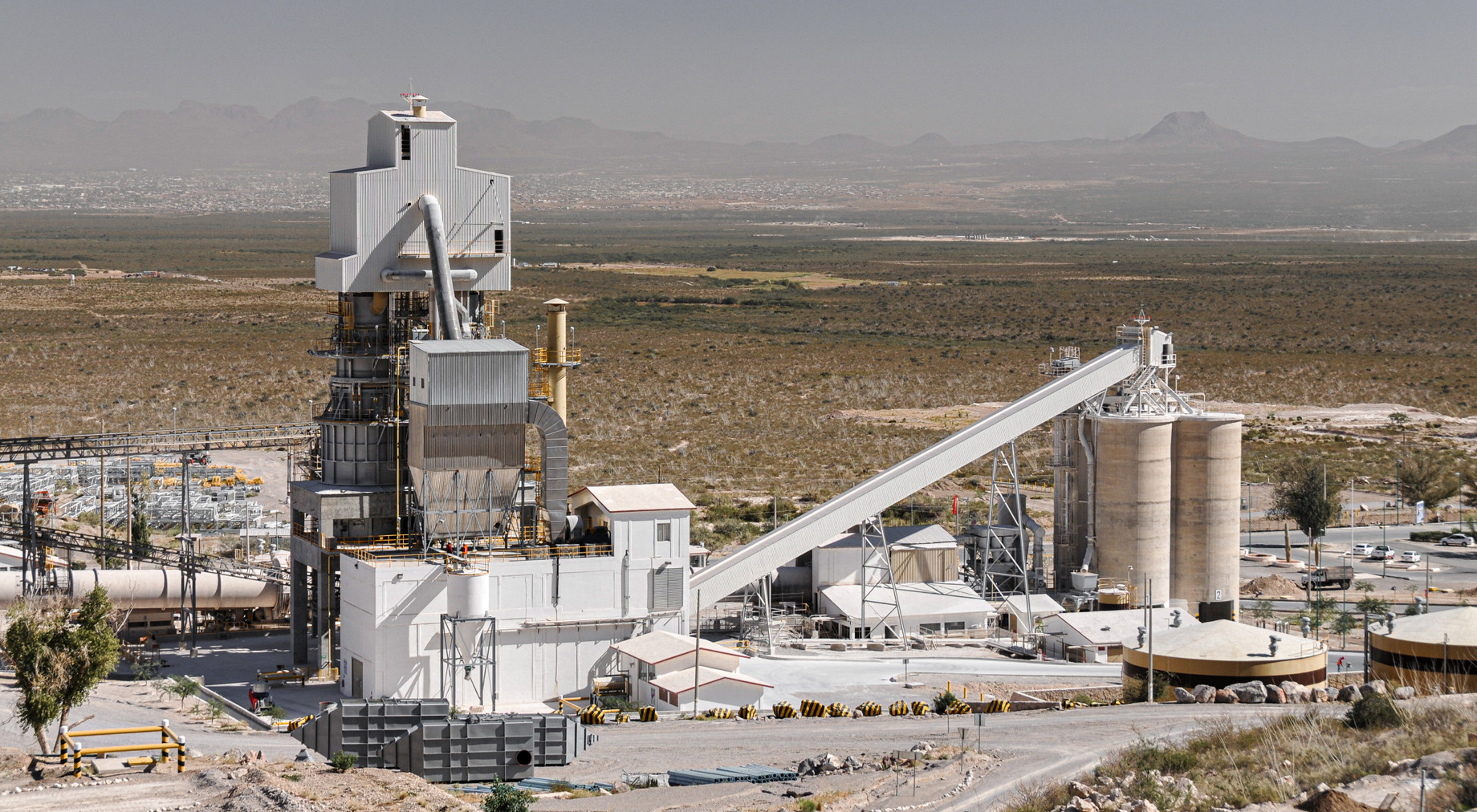Maerz lime kilns
We have been building kilns for the lime industry for over 60 years. The principle of the Maerz PFR kiln has become a classic.
Maerz sets standards in the lime industry.
You can customise or upgrade your kilns
Maerz offers many options to adapt the kilns exactly to your needs. This gives you the opportunity to determine exactly what you want your kiln to be able to do.
Some of the expansion options listed here can only be considered from the outset on a newly built kiln; however, many of the solutions offered can also be retrofitted to existing kilns.
Oxyfuel firing
- for a higher CO2 content in the off-gas
For very high concentrations of CO2 in the off-gas of > 95 %, we have developed the Maerz EcoKiln®.
However, for many applications, such as the production of PCC, soda or sugar, a CO2 content in the flue gas of 40 - 45 % is sufficient. This can be achieved by installing an oxyfuel firing system, in which the combustion air is replaced by an oxygen-enriched flue gas. This system can be used with both Maerz PFR kilns and Maerz HPS kilns.
Existing kilns can also be upgraded with an oxyfuel firing system in order to reduce the investment and operating costs of the downstream systems for enriching and liquefying the CO2 in the off-gas if CO2 capture is required in the future.
Maerz hybrid kilns- for a flexible reactivity of the quicklime
Flexibility with respect to product quality and fuel use is written in capital letters in lime plants today. In addition to highly reactive lime in large quantities, medium-reactive lime in smaller quantities is also needed for special applications. That is no problem with our hybrid kiln: it can be operated like a normal PFR kiln and, if necessary, the lime can be thermally posttreated by switching on side burners in the lower kiln area, thus setting the desired reactivity.
Please also read our publication on this topic.

Maerz Finelime® kilns- for a better utilisation of the quarry
Maerz PFR kilns can also be designed in a special way that allows small stones to be fired in a shaft kiln, thus increasing the degree of utilisation of the quarry. Both the geometry of the cooling zone and the preheating zone are optimised for the use of small stone, so that this design of Maerz Finelime® kilns can only be chosen for new kiln construction.
Another modification enables the simultaneous use of several grain bands for kiln operation, each of which is fed into the kiln according to an optimised pattern. This allows the total bandwidth of grain bands to be significantly expanded, which in turn optimises the utilisation rate of the quarry. This upgrade can also be carried out on existing plants, provided there is sufficient space for several stone bunkers in the area in front of the skip.
Maerz external cooler
- for lime with the highest quality demands
Maerz has developed a patented process to further optimise the cooling process in kilns with a direct overflow channel. This makes it possible to produce quicklime of the highest quality, as used in the food industry, for example. At the same time, the residual CO2 content can be kept very low and the reactivity very high.
The quicklime is cooled in two steps: a reduced supply of cooling air into the shafts keeps the temperature of the quicklime in the upper part of the cooling zone at a constantly high level. In this process, the lime is discharged at higher temperatures compared to conventional lime kilns. Further cooling of the quicklime takes place in a second step in an external cooler, which is installed under the discharge flaps of the shafts. Depending on the space available, an external cooler can also be installed in existing plants.
Please also have a look at our publication on this topic.

High-pressure fans
- for savings in electrical power consumption
Maerz kilns operate at positive pressure, with the required process air for combustion air, cooling air and, in the case of a PFR kiln, lance cooling air usually being compressed using rotary piston blowers.
With a new generation of high-pressure fans, the required air volumes (or also the recirculation gases in oxyfuel operation) and pressures can be provided with up to 25 % lower electrical power consumption. This can bring significant savings, especially with larger kilns, so that a conversion pays for itself after a relatively short time, even on existing systems.
Read our publication about a successful use of high-pressure fans.






